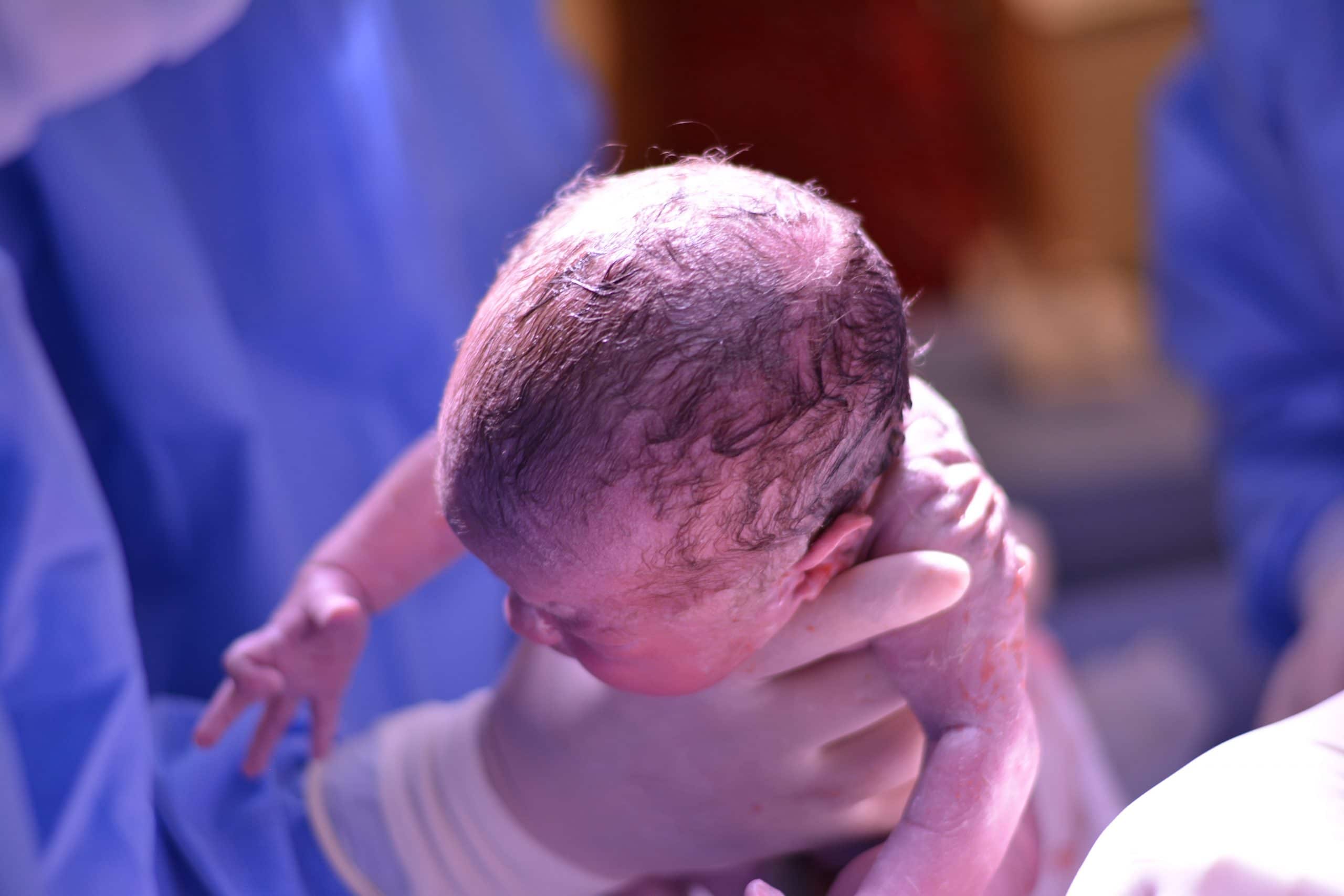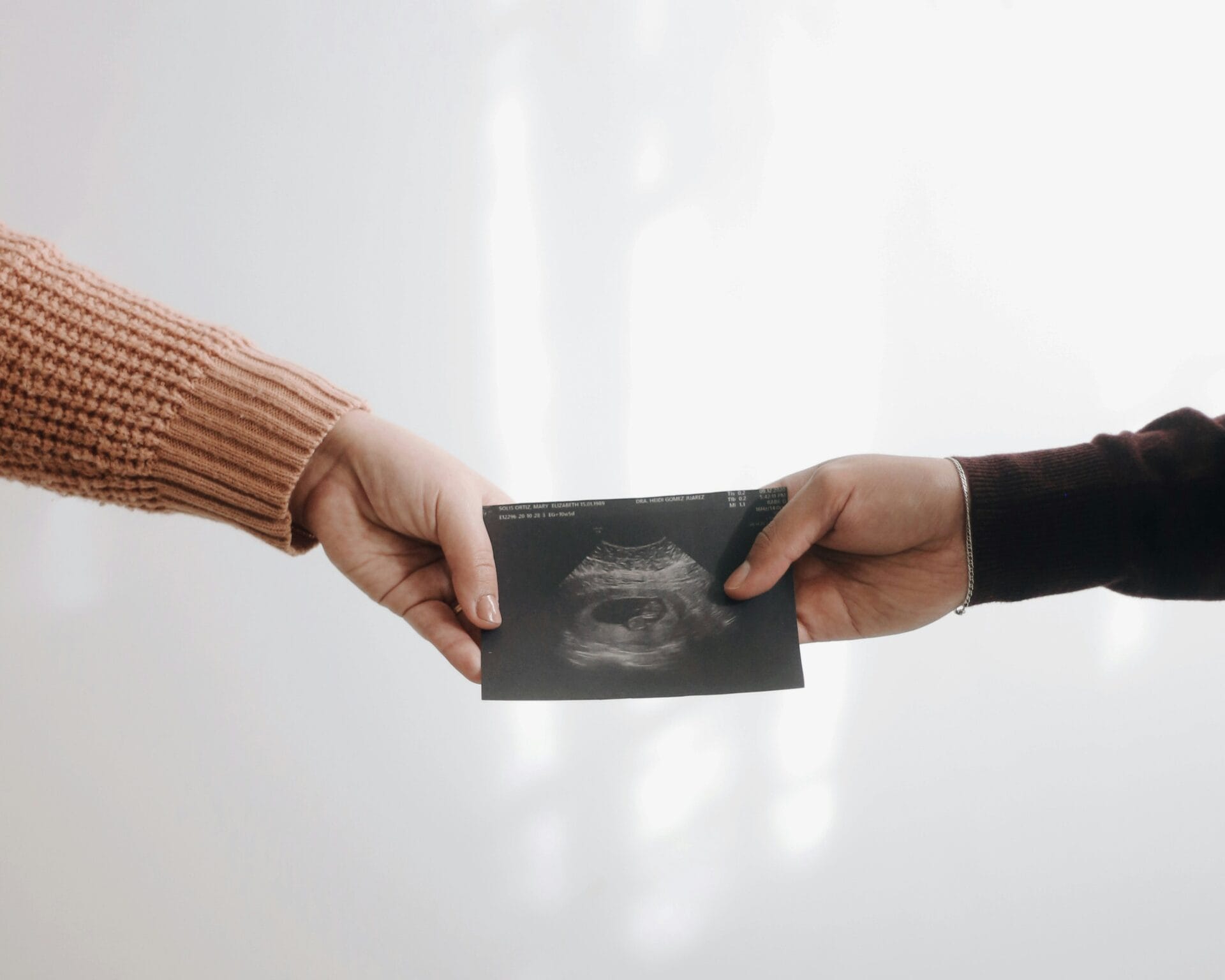
Editor’s Note 9/8/21: The author has added a paragraph and made minor edits under the section “Manipulated Statistics” to clarify the relationship between the CDC and RG data sets.
Pregnancy and childbirth are not easy. Besides the effects on the mother’s body, her career plans, her relationships, and her identity, there are also health factors to consider. In a small minority of cases, pregnancy-related complications directly threaten the mother’s life. Many abortion-choice advocates are well aware of that danger. Some even claim that abortion is safer than childbirth, up to 14 times safer.[1] Where do they get this idea? Are they right? Is abortion 14 times safer than childbirth?
Estimated reading time: 10 minutes.

It’s a pretty radical claim to say that abortion is 14 times safer than childbirth. It’s so radical, there’s only one source that claims they can prove it. It’s a journal article from abortion-choice researchers Elizabeth Raymond and David Grimes (hereafter, “RG study”).
This article has become one of the most popular citations regarding “safe abortion.” It’s easy to read (five pages), easy to access (free online), it’s written by one of the biggest names in the pro-choice lobby (David Grimes), and it cites recognized resources (CDC and Guttmacher). Whenever people say, “Abortion is 14 times safer than childbirth” they are referencing the RG study (like Reuters, USNews, FoxNews, DailyKos, Time, Reddit, Public Radio, Huffington Post, Relias Media, and Slate).
There is a reason, however, why no other study claims to demonstrate that this “14 times safer” claim. They can’t reproduce the results, so no other study has been able to corroborate that enormous claim. The RG study might be the most famous, and most widely cited paper on the subject, but despite its popularity, it’s pretty much useless.
Now I know people on the internet can exaggerate things, but I’m picking my words carefully here. The RG study has bad methodology and weak evidence, it’s poorly researched and argued, it doesn’t support its conclusion, and it isn’t even titled correctly.
This paper is pretty much useless because it’s irreparably flawed. But even in the wider world of abortion statistics and medical research, beyond just the RG study, there are major limitations in data collection making it virtually impossible to say honestly, that abortion is demonstrably safer than childbirth.
In this article, I’ll begin by looking at the shortcomings of the RG study in more detail. Then, I’ll examine the broader trends that undermine our ability to draw sweeping conclusions about the relative safety of abortion. Finally, I’ll talk about how this should affect pro-life policies and conversations.
If you prefer to watch a video version of this article, click below:
Problems with the Raymond and Grimes Study
The overarching problem for the RG study is they use critically different data sets that don’t compare with each other.
To illustrate this point, consider which is healthier: a dozen elementary children or a dozen senior citizens? Before you answer, would it matter if the elementary children all had terminal cancer and the senior citizens were all part of an endurance running club? When two data sets are compared without controlling for the variables you end up with a faulty comparison. That’s what’s happening in the RG study.
More specifically, the RG study compares the mortality rates for birth mothers and for abortion patients, but they didn’t show that those data sets are gathered and sorted in the same way. They can’t show that, because the data sets differ radically.
Comparing two data sets without accounting for these critical differences is irresponsible research. That’s why the primary source for the researcher’s data, the Center for Disease Control (CDC), was cited in Supreme Court testimony showing that the data sets don’t compare (in Gonzalez vs. Planned Parenthood, 550 US 124 [2007], pg. 4).
1: COMPARING DATA SETS THAT DIFFER IN SCOPE
The RG study uses abortion numbers from the Center for Disease Control (CDC), yet these stats exclude Maryland, California, New Hampshire, Washington DC, and New York City. Those places haven’t reported their abortion stats to the CDC in years. Meanwhile, all cities and states are required to report all childbirths and any related deaths.
How can states like Maryland, New Hampshire, and California (California, which due to its size and politics, may have the most abortions of any state!) avoid reporting abortions and abortion-related deaths? It’s because all abortion reporting is voluntary. Cities and states aren’t required to report abortions, or abortion-related deaths, to any federal authorities. The two data sets RG compares differ dramatically; one covers everything meticulously, and the other is filled only at the whim of individual organizations. There is no meaningful or valid comparison of the two that can be made.
Beyond this glaring issue, there are smaller problems affecting the comparative scope of the data sets. Since abortion-related deaths do not have to be reported as such (or at all), that means they can be attributed to other causes with no mention of the abortion. When a woman dies from hemorrhaging after an abortion-pill, for example, that abortion might be reported as a miscarriage and the mother’s death chalked up to childbirth-complications. In that way, misreporting can reverse the data, faulting childbirth when an abortion was to blame.
We don’t currently know how often this may be happening. It could be rare or it could be common. We just don’t know. But we cannot responsibly trust the conclusion of the RG study until we have some sense of how often those abortion-deaths are masked as childbirth-deaths. Since we are probably talking about numbers that are a fraction of a percent, even a small number of misreported abortion-deaths can drastically shift the statistics.[2]
Another way the RG stats aren’t comparable is that the study excludes abortions performed outside of a legal clinical setting while including non-clinical childbirths. All childbirths have to be reported to the state, including home-births, water births, and births utilizing hypnosis or acupuncture, which may carry greater risks than birth in general. Abortion looks safer when it excludes all the do-it-yourself abortions and criminal misconduct abortions (such as domestic violence cases).
The RG study also doesn’t distinguish between inherent and chosen risks. If the mother’s goal is to have a healthy baby, she may be willing to risk personal injury or even death to help her child. It could be foolhardy or heroic to make that choice, but, either way, the heightened risk was not from the procedure itself but from the mother’s choices directing that procedure. It’s irresponsible to ignore this, especially when the circumstances that give rise to such a choice could stem from complications due to prior abortions (more on that below).
2: MANIPULATED STATISTICS
The RG study can also be faulted for manipulating statistics in the form of inflation, false equivalence, and third-variable fallacies. For example, compared to abortion mortality rates, the “maternal mortality rate” in the RG study is inflated.
The RG study derives it’s maternal mortality rate, in part, from CDC statistics. And for the CDC, “Maternal mortality is determined by dividing maternal deaths by live births, not by pregnancies…This will necessarily tend to inflate the mortality rate, as many pregnancies end in miscarriage or stillbirth” (Gonzalez vs. Planned Parenthood 2004, pg. 4).

In other words, the CDC maternal mortality rate takes all birth-related deaths (the numerator) and divides them by only live births (the denominator), so all stillbirths and miscarriages are only addressed in the top number and not the bottom. The result is an inflated mortality rate for childbirth but not abortion.
It should be noted that the MMR is calculated a bit differently between the CDC rate (above) and the RG study. While the CDC begins with all maternal deaths in childbirth, the RG study narrows that down to maternal deaths that result in live birth. Nevertheless, the RG study still incorporates the CDC data – with all the methodological drawbacks it carries – before extracting a subset of that data for their specific purposes, namely the live-birth cases. Note also that CDC method for compiling that data was to “identify all deaths occurring during pregnancy or within 1 year of pregnancy.”[3] This means there were women who died of heart attack, cancer, and car accidents – all unrelated to child-birth – but were included as “maternal deaths,” and some of them had had live births. The RG study includes these cases, thus artificially inflating the maternal mortality rate for childbirth.
Moreover, by focusing on live-birth cases, RG artificially inflates the mortality rate for birthing mothers by ignoring all the women who survive miscarriage or stillbirth. These cases combine for roughly half a million yearly.
If the RG study were trustworthy, it would avoid this inflation and also take care to exclude false positives, and outside factors, where pregnant women die of other causes unrelated to childbirth or abortion. The study is careful to avoid false positives for abortion cases, presumably since those would undermine its argument, but not so careful with childbirth cases.
If a woman has an abortion, contracts MRSA in the abortion facility, and subsequently dies, she would not be included in the RG study’s abortion-related mortality data. But if the same woman instead delivered her child in a hospital and died from complications of MRSA within one year of giving birth, the RG study would include her as a pregnancy-related death! This is a blatant double-standard. It pads the numbers so RG can make the safety risks in childbirth look worse than they really are. Padded numbers generate bloated conclusions. Not to mention, if an abortion patient dies during the procedure, clinicians can chalk that up to “childbirth-related death” as it might be less scandalous for the family.
This double-standard is all the more troublesome because if the same measure were used for both childbirth and abortion then abortion would appear two to four times deadlier than childbirth. Abortion correlates with higher rates of murder, drug-related death, and suicide, but the RG study excludes those cases from the abortion data while including those cases in the data on childbirth. It’s a flagrant double-standard that, by itself, ruins the credibility of the RG study.
Of course, health and safety are more than just death statistics. To treat them synonymously is a false equivalence. The RG study claims to talk about this under the banner of “comparative safety,” but the body of the study ignores everything but mortality rates. The title “The comparative safety of legal induced abortion and childbirth in the United States” is false advertising. Even if Raymond and Grimes were to prove their case, showing that abortion generates fewer maternal deaths than does childbirth, they would still need to expand their study to include at least a representative set of other health risks before the paper could live up to its title. As it stands, the title of the article claims more than it is designed to prove.
Another glaring oversight in the RG study is that it overlooks abortion as a third variable. Past abortions increase the chance of complications and death in childbirth later in life. Abortion is tied to ectopic pregnancies, where the human embryo implants outside the uterus. Post-abortive women are two to four times more likely to have an ectopic pregnancy, and as many as 12 percent of all maternal deaths are tied to ectopic pregnancies.[4] The RG study would count all of those as “childbirth-related deaths,” even though they were potentially caused by past abortions.
Pregnancy complications can also stem from pelvic inflammatory disease, a condition occurring in as many as 30 percent of women post-abortion.[5] And the risk of miscarriage, stillbirth, premature delivery, and malformation escalates as much as 1,000 percent for women who have had abortions.[6] The rate of placenta previa, a life-threatening condition where the placenta covers the cervix, escalates 500–700 percent for post-abortive women.[7] Not all complications directly threaten the mother’s life, but they can motivate a cesarean section, which is a lot more risky than conventional delivery.
3: THE RG STUDY IS BAD SCIENCE.
The RG study is methodologically flawed and nonsubstantive. It’s “secondhand” in the sense that the authors rely entirely on borrowed stats (from CDC and Guttmacher) without doing original research or even reformulating the data to eliminate variables and create a fair comparison. It’s less substantial in that it’s a short article, drawing a shallow conclusion from underdeveloped data. It is not pooling and reviewing multiple studies, proposing new insights, bringing clarity into the field, or pioneering any new or innovative research. It does not have the marks of serious scholarship, except that it’s published in a research journal. It’s no surprise, then, to see primary sources and original research discrediting the RG study (such as the 2013 study by Byron Calhoun and undercutting testimony by the CDC in federal court).
One major test for serious scholarship in medical research journals is whether the conclusion is verifiable and repeatable. But the RG study fails here, too. No other researchers have been able to verify the bloated claim that “abortion is 14 times safer than childbirth.” Instead, we find multiple studies point the other way.[8] Abortion patients in Denmark, for example, show a higher mortality rate compared with birthing mothers in a 2012 study by Reardon and Coleman and again in a subsequent study the same year. Another 2004 study in Finland established that abortion patients in Finland showed a six times higher suicide rate, four times higher accidental death rate, and 10 times higher homicide rate compared to other women.
Beyond RG, We Still Can’t Say Abortion is Safer
So, the Raymond and Grimes study has proven untrustworthy. But even if that study isn’t a trustworthy source, are they still correct? Could abortion be safer despite the flaws of that study?
Abortion Statistics are Unreliable
The available data simply isn’t comprehensive enough to support the kind of sweeping claims of the RG study. Only partial, incomplete, and suggestive evidence is available at this point. There is no mandatory reporting on abortions, nor on abortion complications. And the many factors listed above need to be considered before a meaningful comparison can be made for the US. For these reasons, expert witness Dr. John Thorp concludes “any meaningful comparison between the health risks” of abortion and childbirth “is precluded at this time” (Thorp 2013, art. 14).[9]
Besides the problems discussed above, there are many other reporting problems undercutting not only the conclusions in the RG study, but also the ability to make any good comparison between abortion and childbirth data in the US. The data sets are complicated because of:
- Underlying risk factors such as high blood pressure, diabetes, anorexia, or depression
- The lack of consensus on a time frame for “abortion-related” or “childbirth-related” mortality
- Incomplete or non-standardized medical records misattributing cause of death
- Inaccurate patient self-reporting due to shame, regret, or self-protection (which can lead to underreporting abortions, even if they’re the cause of complications)
- Abortion facilities’ vested interest not to self-report abortion-related complications and mortality, and lack of compulsion to report them accurately
- The short-term nature of the data (ignoring longitudinal concerns, like increased depression, substance abuse, etc.)
- The fact that less than half of women who get abortions receive follow-up care (reducing the ability to detect and report complications)
- Bureaucratic obstacles to reporting and investigations (such as those delaying the investigation and prosecution of Kermit Gosnell for 10 years after the initial complaint)
From the above list, underreporting due to shame merits special attention. Abortion is unusual among “medical procedures” in that patients are typically quite embarrassed about it, even to the point of lying about it in surveys and interviews. This “shame factor” does not just suppress statistics, it creates a practical obstacle for women escalating the risks of abortion. In the short term, if the patient refuses to admit the abortion to her friends and family then she is less likely to have the practical support she needs if a complication arises. Abortion doesn’t typically offer the culture of support that conventional motherhood does, with baby showers, announcement parties, and a small community of eager helpers. Abortion patients often face their risk factors alone, isolated by shame, fear, guilt, and embarrassment.
Better Data Shows Abortion Dangers More Clearly
Some of the reporting issues, such as the lack of mandated abortion reporting, are specific to the United States. The US has a reporting problem with abortion. But not every country has the same problem. John Thorp explains:
“The US has no national health registry identifying and linking all individual healthcare interventions, diagnoses, hospitalizations, births, deaths and other vital statistics, unlike Scandinavian countries. Accordingly, epidemiological studies using these national data sets from abroad are methodologically superior to US data” (Thorp 2003, art. 19).
Thorp then cites four different studies that prove the opposite conclusion from the RG study. Each study is based in Scandinavian countries with socialized healthcare systems where exact reporting is required for the sake of government funding and supervision. All four studies show that abortion has a higher fatality rate for mothers than childbirth. And all four indicate that modern abortion procedures link to more dangerous outcomes than the RG study admits.
C-sections Promote Higher-Risk Childbirth
With advancing medical technology, childbirth should be safer today than ever before but the rate of complications has remained fairly steady. C-sections could be the cause. Cesarean section delivery is more invasive and riskier than vaginal delivery. And the percentage of c-sections has risen dramatically, from about 21 percent of births in 2003 to 32 percent today.[10] Several factors could be cited, and many of these are lifestyle choices rather than inherent risks in childbirth.
-
- Defensive Medicine: This is when physicians are known to “recommend the most aggressive treatment possible to avoid a negligence lawsuit.”[11]
- Older mothers: The likelihood of medical complications rises sharply after age 35, and many of those complications hamper and endanger vaginal delivery.
- Overweight mothers: Childbirth is hard on the body, and if the mother has weight-related health problems physicians may recommend inducing delivery and c-section to shorten the length of pregnancy.
- Fertility Treatments: Some patients use fertility treatments to overcome obstacles like old age, infertility, or physical impairments. However, fertility treatments often result in multiple births, which is a cause for c-sections. And they can make a woman pregnant who, otherwise, isn’t healthy enough to carry a pregnancy full-term. Again, a c-section is a strong possibility.
- Patient Request: It’s not uncommon for the patient to request a c-section to avoid the pain of childbirth, for cosmetic reasons, or to fit her delivery into her busy schedule.
Pregnant patients should be aware that defensive medicine, age (35-plus), weight problems, and fertility treatments can all raise the chances of a c-section, in turn, raising the relative risks for mothers. The mother, requesting a c-section, has only a remote chance of suffering a debilitating injury or death, but it’s still a higher chance than otherwise.
SO, ABOUT THAT GRANDIOSE ABORTION-SAFETY CLAIM…
In short, anyone claiming to have statistical proof that abortion is broadly safer than childbirth is wrong. Before a person can wear the mantle of science declaring “abortion is safer than childbirth,” he or she will need better statistics than are currently available.
The best evidence we have so far suggests childbirth in the US is potentially safer than abortion, but that’s suggestive evidence based on outside research from other countries (like Finland and Denmark). As long as states do not have to report abortions, and as long as shame, silence, and politics suppress the data, then we will struggle to find the extensive and reliable stats needed for journal-quality reporting. Thorp concludes, “There are numerous reasons why any comparison between maternal deaths to abortion deaths,” at this time, is not “valid or sound” (Thorp 2013, art. 15).
As for those people who still want to claim that abortion is 14 times safer than childbirth? They have no basis in fact or grounding in science. The source behind it is thoroughly debunked, most notably in court records from John Thorp Jr. and a review study by Byron Calhoun, and it’s been contradicted by a number of smaller but more meticulous studies in Scandinavia, where they do not have the same reporting gaps as the US.
Childbirth does carry health risks, and expectant mothers should be informed and proactive about them. We can admit the need for better data in comparing and clarifying those risks. But there is no truth to the claim that abortion is 14 times safer than childbirth.
Editor’s Note: John Ferrer has published a three-part series, available on his blog, that covers this subject in more detail:
ENDNOTES
[1] Elizabeth G. Raymond and David A. Grimes, “The Comparative Safety of Legal Induced Abortion and Childbirth in the United States,” Obstetrics and Gynecology, 119 (Feb 2012), 215; Taylor Pittman, “How One Big Myth About Abortion Is Hurting Everyone,” Vox (28 April 2016), https://www.huffpost.com/entry/how-one-big-myth-about-abortion-is-hurting-everyone_n_57212e9de4b0b49df6aa1d4a?guccounter=1; Genevra Pittman, “Abortion Safer than Giving Birth: Study,” Reuters (23 Jan 2012), para. 2, https://www.reuters.com/article/us-abortion-idUSTRE80M2BS20120123; Serena Gordon, “Abortion Safer for Women than Childbirth, Study Says,” HealthDay (23 Jan 2012), at: https://consumer.healthday.com/women-s-health-information-34/abortion-news-2/abortion-safer-for-women-than-childbirth-study-claims-661006.html
[2] The CDC reports 700 childbirth-related deaths per year. With 3,855,500 childbirths in 2017 (the last year on record). That works out to be 0.0018% chance of death for the mother. The CDC also recorded 638,169 abortions in 2015 (the most recent Abortion Surveillance reporting year) with only 6 reported abortion-related deaths, or 0.0000094%.
[3] Jenni Chang, et al. “Pregnancy Related Mortality Surveillance – United States, 1991-1999,” In Surveillance Summaries, Center for Disease Control, 21 February 2003, 52(SS02), para. 9, accessed at https://www.cdc.gov/mmwr/
[4] Some pro-choice sources dispute the claim that abortion is causally related to ectopic pregnancies. For example, the Ectopic Pregnancy Trust claims outright that “Abortion is not linked to ectopic pregnancy.” (thttps://ectopic.org.uk/patients/reasons-for-an-ectopic-pregnancy/). But on the same page, they admit the “mini-pill” and “emergency contraception” are “reasons for ectopic pregnancy,” though these can cause an early-term abortion by preventing the human embryo from implanting. Meanwhile, American Pregnancy Association, which is a pro-choice friendly organization, openly admits the connection listing “multiple induced abortions” as a “risk factor for ectopic pregnancies.” See also, Randy Alcorn, Prolife Answers to Prochoice Arguments, upd ed. (2000), 180.
[5] Alcorn, 180
[6] Alcorn, 180-181.
[7] Alcorn, 180-181.
[8] Priscilla K. Coleman and David C. Reardon, “Abortion and Subsequent Maternal Death Rates: First new Study from Denmark,” Medical Science monitor 18, no. 9 (2012), PH 71-6; Priscilla K. Coleman, David C. Reardon, Byron C. Calhoun, “Reproductive History Patterns and Long-Term Mortality Rates: A Danish, Population-Based Record Linkage Study,” European Journal of Public Health 23, no. 4 (1 Aug 2013), 569-74; Byron C. Calhoun, “Maternal Mortality Myth in the Context of Legalized Abortion,” Linacre Quarterly 80, no. 3 (17 July 2013), 264-76; Mika Gissler, et al., “Pregnancy-Associated Mortality After Birth, Spontaneous Abortion, or Induced Abortion in Finland, 1987-2000,” American Journal of Obstetrics and Gynecology 190, no. 2 (Feb 2004), 422-7. Dr. John Thorp in written testimony for “Planned Parenthood vs. Van Hollen, et al.” (15 July 2013) cites the following studies, as undermining and or contradicting the RG study: (1) Reardon, D., Strathan, J. Thorp, J. & Shuping, M. Deaths Associated with Abortion Compared to Childbirth – A Review of New and Old Data and the Medical and Legal Implications,” Journal of Contemporary Health Law & Policy 20 (2004), 279-327; (2) Mika Gissler, et al. “Pregnancy Associated Deaths in Finland 1987-1994: Definition Problems and Benefits of Record Linkage,” A Acta Obstetricia et Gynecologica Scandinavica 76 (1997), 651-7; (3) David Reardon, et al. “Deaths Associated with Pregnancy Outcome: A Record Linkage Study of Low Income Women,” Southern Medical Journal 95 (2002), 834-41; (4) Maarit Niinimaki, et al., “Immediate Complications after Medical Compared with Surgical Terminations of Pregnancy,” Obstetrics & Gynecology 114 (2009), 795-804.
[9] John Thorp Jr., “Declaration of John Thorp” [testimony/evidence brief] submitted in Planned Parenthood vs. Van Hollen, et al. (2 Aug 2013), article 14, accessed 23 August 2018 at https://rewire.news/wp-content/uploads/2014/11/Thorp-Declaration-Planned-Parenthood-of-Wisconsin-v-Van-Hollen_13cv465_7.13.2013.pdf
[10] Data compiled from several links found at “Births, Method of Delivery,” Center for Disease Control (CDC.gov, last updated 31 March 2017), accessed 8 August 2018 at: https://www.cdc.gov/nchs/fastats/delivery.htm. See also, Emma L. Barber, et al., “Contributing Indications to the Rising Cesarean Delivery Rate,” Obstetrics & Gynecology, 118, no. 1 (July 2011), 29-38; accessed 8 August 2018 at: https://www.ncbi.nlm.nih.gov/pmc/articles/PMC3751192/
[11] Aunindita, “15 Reasons C-Sections are On the Rise,” BabyGaga.com (15 April 2017), para. 4; accessed 9 August 2018 at: https://www.babygaga.com/15-reasons-c-sections-are-on-the-rise/
Please tweet this article!
- Tweet: Is Abortion 14 Times Safer Than Childbirth?
- Tweet: Whenever people say that abortion is 14 times safer than childbirth, they are referencing a study that has poor methodology and weak evidence.
- Tweet: It is a pretty radical claim to say that abortion is 14 times safer than childbirth. It’s so radical, there’s only one source that claims they can prove it.
- Tweet: There is no mandatory reporting on abortions, nor on abortion complications in the United States. This lack of data makes comparing the health risks of abortion and childbirth impossible.
The post Is Abortion 14 Times Safer Than Childbirth? originally appeared at the Equal Rights Institute blog. Subscribe to our email list with the form below and get a FREE gift. Click here to learn more about our pro-life apologetics course, “Equipped for Life: A Fresh Approach to Conversations About Abortion.”
The post “Is Abortion 14 Times Safer Than Childbirth?” originally appeared at the Equal Rights Institute blog. Subscribe to their email list for more articles like this, and click here to learn more about their online course, “Equipped for Life: A Fresh Approach to Conversations About Abortion.”
Share this post
Recent Posts

Abortion Brags from Lily Allen & Hat from Cynthia Nixon Enrage Even Pro-Choice Americans. Can the Pro-Life Generation Take Some Credit?
11 Jul 2025
Young Mom Prayed for God’s Hand on Her Child – At Her Ultrasound Appointment, THIS Happened
11 Jul 2025
Letter to the FDA Regarding Chemical Abortion Drugs June 2020
10 Jul 2025
